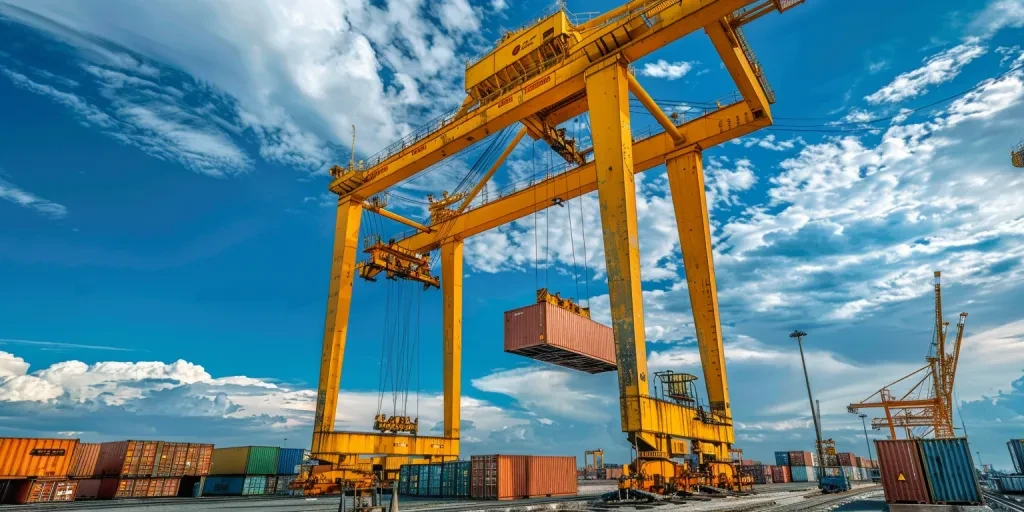Pasar global untuk derek jembatan layang berkembang pesat, didorong oleh kemajuan dalam otomatisasi dan teknologi pintar. Artikel ini memberikan analisis mendalam tentang faktor-faktor penting yang perlu dipertimbangkan saat memilih derek jembatan layang, termasuk kapasitas beban, bentang, tinggi angkat, dan opsi motorisasi. Pembeli profesional akan menemukan wawasan dan panduan berharga untuk membuat keputusan yang tepat, memastikan efisiensi dan keselamatan operasional.
Daftar Isi:
– Tinjauan Pasar Derek Jembatan Atas
– Pengenalan dan Analisis Terperinci
– Faktor Kunci Saat Memilih Crane Jembatan Atas
– Teknologi Canggih pada Overhead Bridge Crane
– Perawatan dan Ketahanan Crane Jembatan Atas
– Pertimbangan Biaya untuk Crane Jembatan di Atas Kepala
– Pikiran Terakhir
Tinjauan Pasar Derek Jembatan Atas
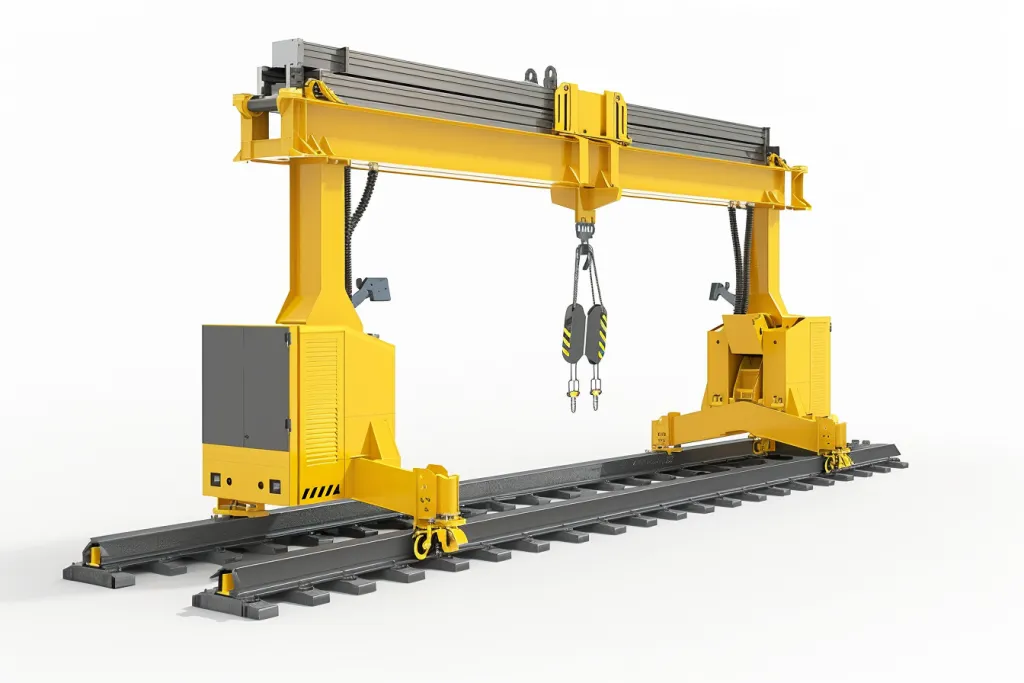
Pasar derek jembatan layang telah menunjukkan pertumbuhan yang signifikan, yang menggarisbawahi peran pentingnya dalam berbagai aplikasi industri. Pada tahun 2024, pasar tersebut bernilai $8.11 miliar dan diproyeksikan mencapai $11.09 miliar pada tahun 2030, didorong oleh tingkat pertumbuhan tahunan gabungan (CAGR) sebesar 5.3%. Pertumbuhan ini disebabkan oleh meningkatnya permintaan akan solusi penanganan material yang efisien dalam industri seperti manufaktur, konstruksi, dan logistik.
Pasar global untuk derek jembatan layang mencakup kawasan-kawasan seperti Amerika Utara, Eropa, dan Asia-Pasifik. Amerika Utara, khususnya Amerika Serikat, tetap menjadi pemain dominan, berkat infrastruktur industrinya yang maju dan investasi berkelanjutan dalam bidang otomasi. Eropa mengikutinya dengan ketat, dengan Jerman dan Inggris memimpin dalam kemajuan teknologi. Kawasan Asia-Pasifik, khususnya Tiongkok dan India, mengalami pertumbuhan pesat karena industrialisasi dan pembangunan infrastruktur.
Pasarnya meliputi derek jembatan layang dengan girder tunggal dan girder ganda, dengan derek girder ganda memegang pangsa pasar yang lebih besar karena kapasitas bebannya yang lebih tinggi dan kesesuaiannya untuk aplikasi tugas berat. Sektor-sektor utama yang mendorong permintaan meliputi manufaktur otomotif, kedirgantaraan, dan mesin berat, di mana presisi dan efisiensi dalam penanganan material sangat penting. Meningkatnya adopsi teknologi otomatisasi dan pintar di sektor-sektor ini semakin mendorong pertumbuhan pasar.
Pengantar dan Analisis Terperinci
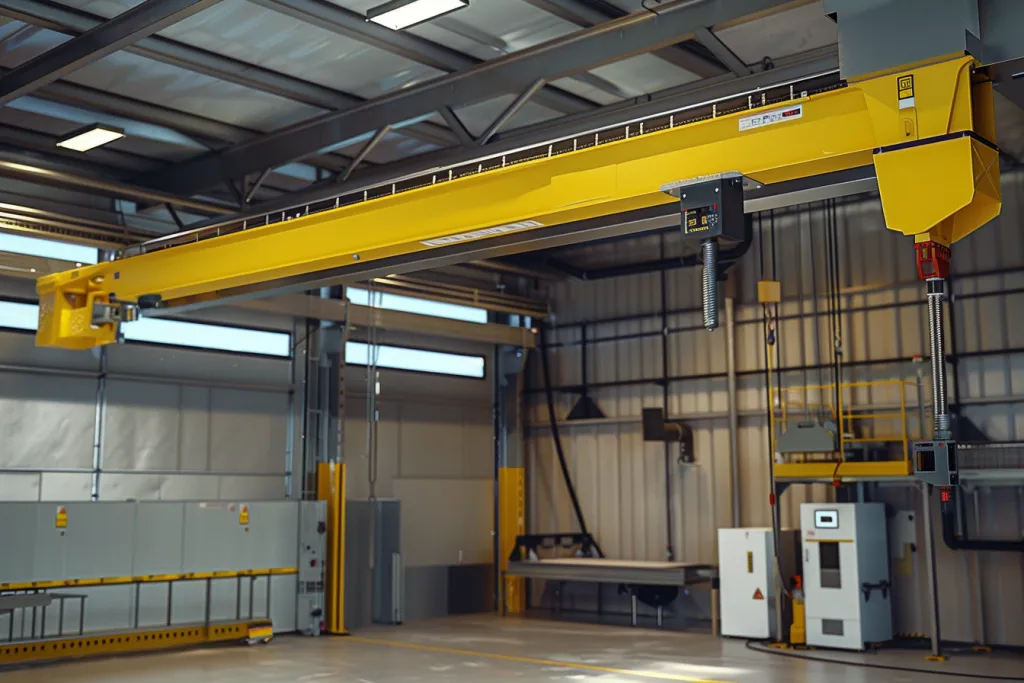
Derek jembatan di atas kepala, yang juga dikenal sebagai derek bergerak di atas kepala, sangat penting dalam berbagai pengaturan industri untuk mengangkat dan mengangkut beban berat dengan presisi. Derek ini terdiri dari landasan paralel dengan jembatan bergerak, dilengkapi dengan kerekan untuk operasi pengangkatan. Pasar ini dicirikan oleh inovasi teknologi, dengan kemajuan dalam otomatisasi, fitur keselamatan, dan efisiensi energi.
Tolok ukur kinerja utama untuk derek jembatan layang meliputi kapasitas beban, kecepatan angkat, dan efisiensi operasional. Derek modern dilengkapi dengan sistem kontrol canggih, yang memungkinkan penanganan beban yang presisi dan mengurangi campur tangan manusia. Integrasi teknologi telematika dan IoT memungkinkan pemantauan waktu nyata dan pemeliharaan prediktif, mengurangi waktu henti, dan meningkatkan produktivitas. Pasar juga beralih ke desain yang ramah lingkungan, dengan produsen yang berfokus pada pengurangan konsumsi energi dan emisi.
Pemain mapan seperti Konecranes, Liebherr, dan Demag mendominasi pasar, memanfaatkan portofolio produk dan keahlian teknologi mereka yang luas. Perusahaan-perusahaan ini terus berinovasi untuk mempertahankan keunggulan kompetitif mereka, dengan berfokus pada solusi berkelanjutan dan digitalisasi. Faktor ekonomi, seperti fluktuasi harga bahan baku dan kebijakan perdagangan, memengaruhi dinamika pasar, sehingga memerlukan perencanaan strategis dan manajemen risiko.
Perilaku konsumen beralih ke derek otomatis dan cerdas, didorong oleh kebutuhan akan peningkatan efisiensi dan keselamatan dalam operasi industri. Saluran distribusi terus berkembang, dengan penekanan yang semakin besar pada penjualan langsung dan platform daring untuk menjangkau basis pelanggan yang lebih luas. Inovasi terkini mencakup pengembangan derek jembatan elektrik dan hibrida, yang menjawab permintaan akan solusi yang berkelanjutan dan hemat energi.
Tantangan pelanggan di pasar meliputi biaya investasi awal yang tinggi, kompleksitas perawatan, dan kebutuhan akan operator yang terampil. Untuk mengatasi masalah ini, produsen menawarkan program pelatihan yang komprehensif, layanan purnajual, dan opsi pembiayaan. Strategi pemosisian merek berfokus pada keandalan, keunggulan teknologi, dan solusi yang berpusat pada pelanggan untuk membangun hubungan dan loyalitas jangka panjang.
Strategi diferensiasi melibatkan pemanfaatan teknologi canggih, penyediaan solusi yang disesuaikan, dan peningkatan penawaran layanan. Pasar khusus seperti kedirgantaraan dan pertahanan, yang mana presisi dan keselamatan sangat penting, menghadirkan peluang pertumbuhan yang signifikan. Perusahaan juga menjajaki kemitraan dan kolaborasi strategis untuk memperluas jangkauan pasar dan meningkatkan penawaran produk.
Faktor-Faktor Utama Saat Memilih Crane Jembatan Atas
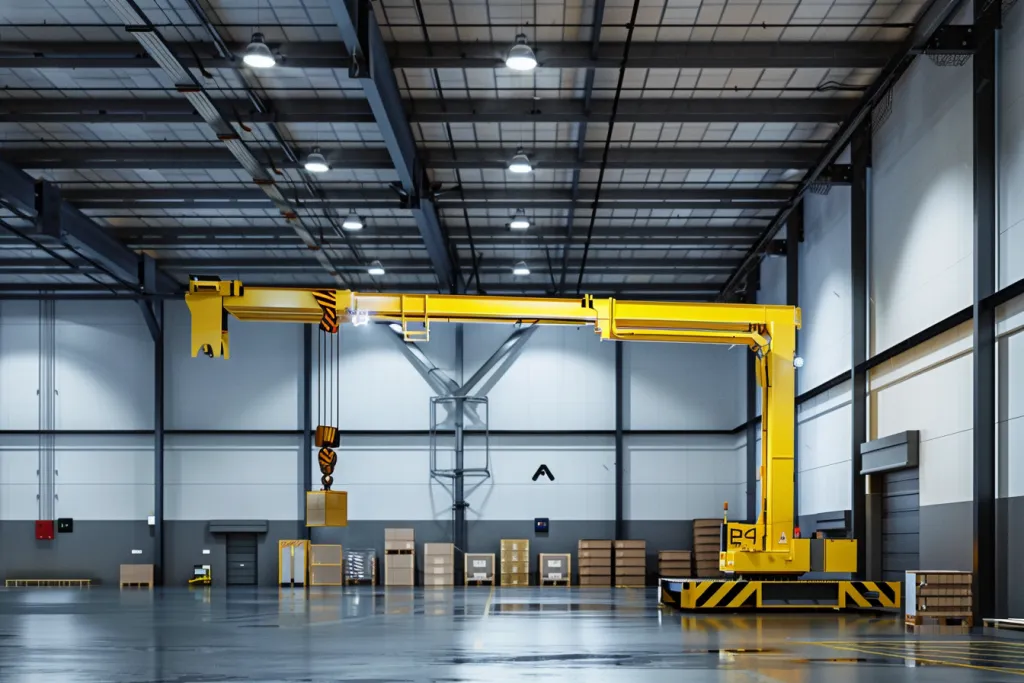
Memilih overhead bridge crane yang tepat sangat penting untuk efisiensi operasional, keselamatan, dan manajemen biaya. Di sini, kami menjajaki faktor-faktor penting yang perlu dipertimbangkan untuk memastikan keputusan Anda selaras dengan persyaratan aplikasi spesifik Anda.
Kapasitas beban
Kapasitas beban merupakan faktor utama saat memilih overhead bridge crane. Ini mengacu pada berat maksimum yang dapat diangkat oleh crane dengan aman. Perkiraan yang terlalu tinggi dapat menyebabkan pengeluaran yang tidak perlu, sementara perkiraan yang terlalu rendah dapat mengakibatkan operasi yang tidak aman dan potensi kegagalan peralatan. Kapasitas beban biasanya berkisar antara 1 ton hingga lebih dari 100 ton. Misalnya, pabrik baja mungkin memerlukan crane dengan kapasitas 50 ton, sementara fasilitas manufaktur kecil mungkin hanya memerlukan kapasitas 5 ton. Selalu konsultasikan dengan produsen untuk memastikan crane dapat menangani beban spesifik Anda.
Rentang dan Tinggi Angkat
Rentang derek jembatan layang adalah jarak antara rel landasan tempat derek beroperasi. Sesuaikan rentang ini dengan lebar area tempat derek akan dipasang. Rentang standar dapat berkisar dari 20 kaki hingga lebih dari 100 kaki. Tinggi angkat adalah jarak vertikal yang dapat diangkat derek untuk mengangkat beban. Pastikan derek dapat mengangkat objek cukup tinggi untuk melewati rintangan dan melakukan tugas yang diperlukan. Misalnya, gudang dengan unit rak tinggi mungkin memerlukan derek dengan tinggi angkat 30 kaki atau lebih.
Konfigurasi Crane: Atas vs. Bawah
Derek jembatan di atas kepala tersedia dalam dua konfigurasi utama: derek yang beroperasi di atas dan derek yang beroperasi di bawah. Derek yang beroperasi di atas memiliki rel yang dipasang di atas balok landasan pacu, sehingga menyediakan kapasitas beban yang lebih tinggi dan ketinggian angkat yang lebih tinggi, cocok untuk aplikasi tugas berat dan bentang yang besar. Derek yang beroperasi di bawah memiliki rel yang dipasang di bagian bawah balok landasan pacu, ideal untuk beban yang lebih ringan dan area dengan ruang kepala terbatas. Pilih konfigurasi yang tepat berdasarkan kebutuhan operasional dan kendala fisik fasilitas Anda.
Sistem Motorisasi dan Kontrol
Derek jembatan layang modern dilengkapi dengan berbagai pilihan motorisasi dan kontrol. Derek bermotor menawarkan kontrol yang presisi atas gerakan mengangkat dan bergerak, meningkatkan efisiensi dan keselamatan. Sistem kontrol dapat berkisar dari kontrol gantung sederhana hingga kontrol jarak jauh nirkabel canggih dan sistem otomatis. Misalnya, kontrol jarak jauh nirkabel memungkinkan operator untuk mengendalikan derek dari jarak yang aman, mengurangi risiko kecelakaan. Sistem canggih dapat terintegrasi dengan sistem manajemen gudang, menyediakan data waktu nyata dan meningkatkan otomatisasi alur kerja.
Fitur Keamanan dan Kepatuhan
Keselamatan adalah hal terpenting dalam setiap operasi pengangkatan. Pastikan derek jembatan layang yang Anda pilih mematuhi standar dan peraturan keselamatan yang relevan, seperti yang ditetapkan oleh Occupational Safety and Health Administration (OSHA) dan American Society of Mechanical Engineers (ASME). Fitur keselamatan utama meliputi perlindungan kelebihan beban, tombol berhenti darurat, dan sistem anti-tabrakan. Beberapa derek juga dilengkapi dengan fitur keselamatan canggih seperti kontrol goyangan dan diagnostik otomatis, yang meningkatkan keselamatan operasional dan mengurangi waktu henti perawatan.
Teknologi Canggih dalam Crane Jembatan Atas
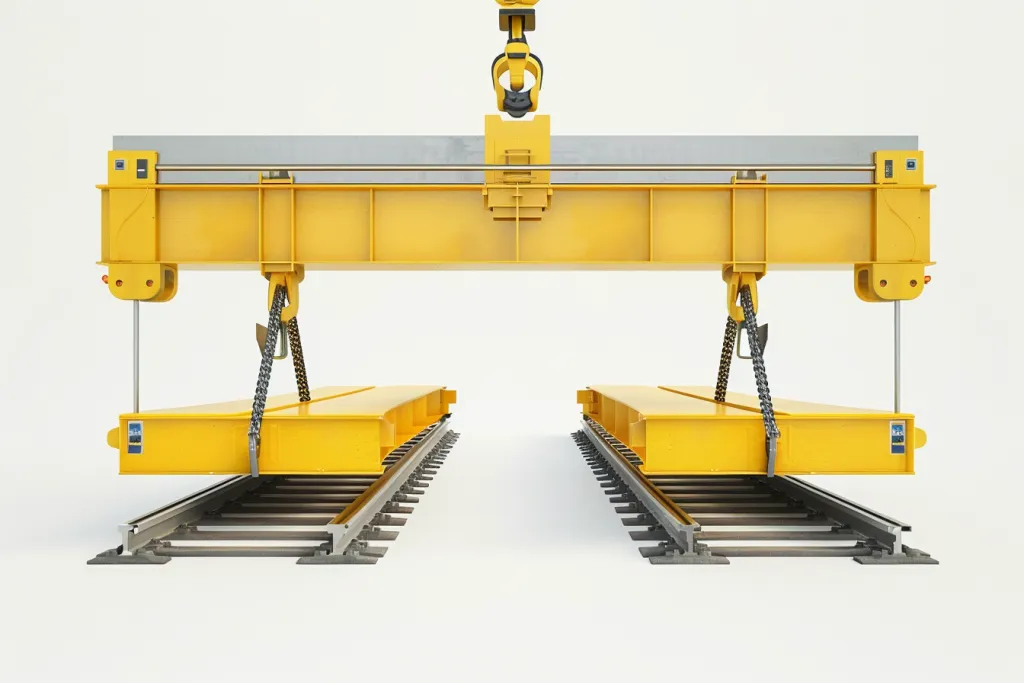
Industri derek jembatan layang telah mengalami kemajuan teknologi yang signifikan, meningkatkan kinerja, keselamatan, dan efisiensi. Di sini, kami akan membahas beberapa fitur teknologi terbaru yang mengubah industri ini.
IoT dan Crane Cerdas
Integrasi Internet of Things (IoT) pada derek jembatan layang telah merevolusi operasinya. Derek yang mendukung IoT dapat mengumpulkan dan mengirimkan data secara real-time, memberikan wawasan tentang kinerja operasional, kebutuhan perawatan, dan kepatuhan keselamatan. Sensor dapat memantau berat beban, pergerakan derek, dan keausan komponen, memberi tahu operator tentang potensi masalah sebelum menjadi kritis. Kemampuan perawatan prediktif ini dapat secara signifikan mengurangi waktu henti dan memperpanjang umur derek.
Otomasi dan Robotika
Otomatisasi merupakan pengubah permainan lainnya dalam industri derek jembatan layang. Derek otomatis melakukan tugas berulang dengan presisi dan konsistensi tinggi, mengurangi kebutuhan akan campur tangan manusia dan meminimalkan kesalahan. Robotika dapat meningkatkan otomatisasi lebih jauh dengan memungkinkan derek melakukan tugas yang rumit, seperti mengambil dan menempatkan barang di lokasi tertentu. Misalnya, di gudang bervolume tinggi, sistem derek otomatis dapat menyederhanakan proses pengambilan, meningkatkan efisiensi, dan mengurangi biaya tenaga kerja.
Sistem Kontrol Lanjutan
Sistem kontrol modern menawarkan presisi dan kemudahan penggunaan yang lebih baik. Penggerak frekuensi variabel (VFD) memungkinkan akselerasi dan deselerasi yang lancar, mengurangi tekanan mekanis pada komponen derek dan meningkatkan keselamatan. Sistem kontrol yang canggih dapat mencakup fitur-fitur seperti kontrol goyangan beban, yang meminimalkan ayunan beban selama pengangkutan, dan pemosisian otomatis, yang memastikan penempatan beban yang akurat. Fitur-fitur ini meningkatkan efisiensi operasional dan meningkatkan keselamatan dengan mengurangi risiko jatuhnya beban dan tabrakan.
Efisiensi energi
Efisiensi energi menjadi perhatian yang terus berkembang di sektor industri, dan overhead bridge crane tidak terkecuali. Model yang lebih baru dirancang dengan motor hemat energi dan sistem pengereman regeneratif, yang mengurangi konsumsi energi hingga 30%. Sistem pengereman regeneratif mengubah energi kinetik yang dihasilkan selama pengereman menjadi energi listrik, yang dapat disalurkan kembali ke jaringan listrik atau digunakan untuk memberi daya pada fungsi crane lainnya. Hal ini mengurangi biaya pengoperasian dan meminimalkan dampak lingkungan dari pengoperasian crane.
Perawatan dan Ketahanan Crane Jembatan Atas
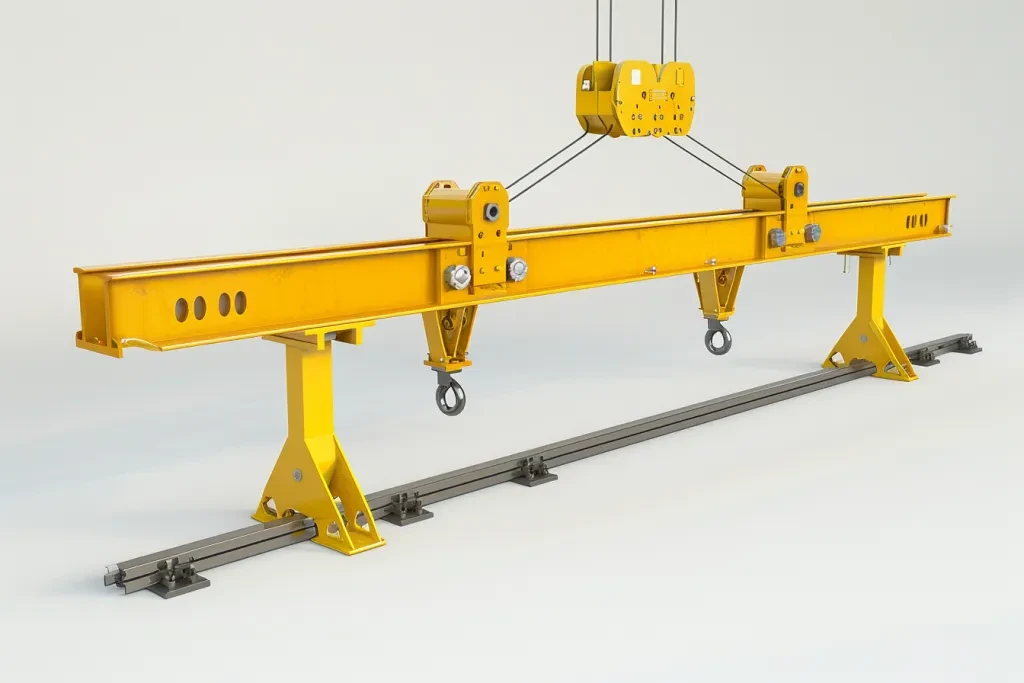
Perawatan yang tepat sangat penting untuk memastikan keawetan dan keandalan derek jembatan layang. Di sini, kami membahas aspek-aspek utama perawatan dan faktor-faktor yang berkontribusi terhadap keawetan mesin ini.
Inspeksi Rutin dan Pemeliharaan Preventif
Pemeriksaan rutin sangat penting untuk mengidentifikasi potensi masalah sebelum menyebabkan kegagalan peralatan. Komponen seperti kerekan, troli, jembatan, dan sistem kelistrikan harus diperiksa secara berkala untuk mengetahui tanda-tanda keausan dan kerusakan. Perawatan preventif meliputi perawatan rutin komponen-komponen ini, termasuk pelumasan, pengencangan baut, dan penggantian komponen yang aus. Mematuhi jadwal perawatan preventif dapat memperpanjang umur derek secara signifikan dan mengurangi kemungkinan kerusakan yang tidak terduga.
Kualitas Bahan dan Konstruksi
Ketahanan derek jembatan layang sangat bergantung pada kualitas bahan yang digunakan dalam konstruksinya. Baja berkekuatan tinggi umumnya digunakan untuk komponen penting seperti jembatan dan kerekan, yang memberikan kekuatan dan ketahanan yang diperlukan untuk menangani beban berat. Pelapis antikarat melindungi derek dari faktor lingkungan seperti kelembapan dan bahan kimia, yang dapat menyebabkan karat dan degradasi. Berinvestasi pada derek yang dibuat dengan bahan berkualitas tinggi dapat menghasilkan biaya perawatan yang lebih rendah dan masa pakai operasional yang lebih lama.
Peningkatan Teknologi
Kemajuan teknologi juga berkontribusi pada ketahanan derek jembatan layang. Derek modern dilengkapi dengan sistem diagnostik canggih yang terus memantau kondisi komponen penting. Sistem ini dapat mendeteksi tanda-tanda awal keausan dan memberi tahu operator untuk melakukan perawatan sebelum terjadi kegagalan. Fitur seperti penggerak frekuensi variabel (VFD) mengurangi tekanan mekanis pada komponen derek dengan memberikan akselerasi dan deselerasi yang halus, yang selanjutnya meningkatkan ketahanan derek.
Pertimbangan Biaya untuk Derek Jembatan di Atas Kepala
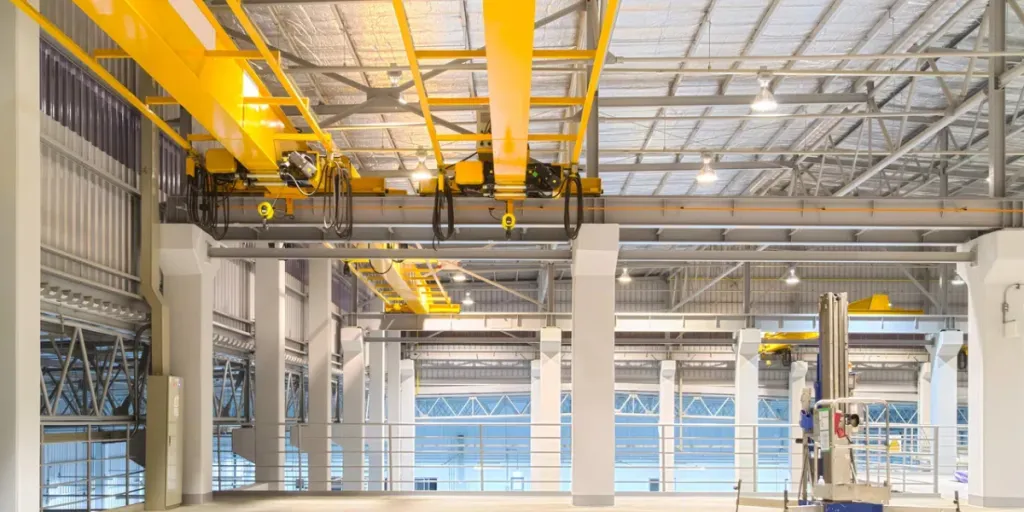
Saat berinvestasi pada overhead bridge crane, pertimbangkan total biaya kepemilikan, termasuk harga pembelian awal, pemasangan, perawatan, dan biaya operasional. Di sini, kami akan membahas pertimbangan biaya ini secara terperinci.
Biaya Pembelian dan Pemasangan Awal
Harga pembelian awal untuk overhead bridge crane dapat sangat bervariasi, tergantung pada faktor-faktor seperti kapasitas beban, bentang, dan fitur tambahan. Misalnya, crane dasar seberat 5 ton mungkin berharga sekitar $50,000, sedangkan crane berkapasitas tinggi dengan fitur-fitur canggih dapat melebihi $200,000. Biaya pemasangan juga harus diperhitungkan, karena dapat menambah total investasi secara signifikan. Biaya pemasangan dapat mencakup modifikasi struktural pada fasilitas, pekerjaan listrik, dan biaya tenaga kerja. Dapatkan penawaran terperinci dari beberapa pemasok untuk memastikan Anda mendapatkan nilai terbaik untuk investasi Anda.
Biaya Pemeliharaan dan Operasional
Biaya perawatan merupakan pengeluaran berkelanjutan yang harus dipertimbangkan saat membuat anggaran untuk derek jembatan layang. Inspeksi, servis, dan penggantian komponen yang aus secara berkala dapat bertambah seiring waktu. Berinvestasi pada derek dengan kemampuan diagnostik dan perawatan prediktif yang canggih dapat membantu mengurangi biaya ini dengan mengidentifikasi masalah sejak dini dan mencegah kerusakan yang mahal. Biaya operasional, seperti konsumsi energi, juga harus dipertimbangkan. Derek hemat energi dengan fitur seperti pengereman regeneratif dapat mengurangi biaya listrik dan memberikan penghematan jangka panjang.
Biaya Total Kepemilikan
Total biaya kepemilikan (TCO) mencakup semua biaya yang terkait dengan pembelian, pemasangan, pengoperasian, dan pemeliharaan derek selama masa pakainya. Pertimbangkan TCO saat membuat keputusan pembelian, karena harga pembelian awal yang lebih rendah tidak selalu berarti biaya keseluruhan yang lebih rendah. Misalnya, derek yang lebih mahal dengan fitur-fitur canggih dan daya tahan yang lebih tinggi mungkin memiliki biaya pemeliharaan dan pengoperasian yang lebih rendah, sehingga menghasilkan TCO yang lebih rendah. Lakukan analisis biaya-manfaat yang menyeluruh untuk menentukan opsi yang paling hemat biaya untuk kebutuhan spesifik Anda.
Final Thoughts
Memilih overhead bridge crane yang tepat melibatkan pertimbangan cermat terhadap berbagai faktor, termasuk kapasitas beban, bentang, tinggi angkat, konfigurasi, motorisasi, fitur keselamatan, dan biaya. Dengan memahami aspek-aspek utama ini dan memanfaatkan kemajuan teknologi terkini, Anda dapat membuat keputusan yang tepat yang meningkatkan efisiensi operasional, meningkatkan keselamatan, dan memberikan nilai jangka panjang untuk investasi Anda.
